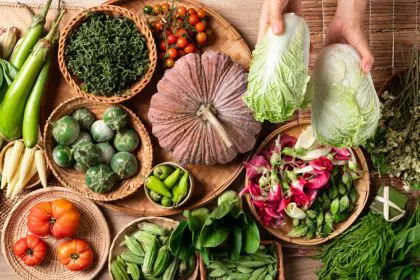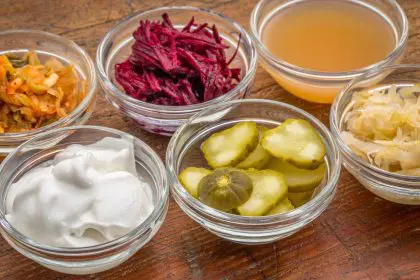That humble vegetable patch or flower bed isn’t just producing food and beauty—it’s actually functioning as a powerful mental health intervention right in your backyard. While therapists write prescriptions and pharmaceutical companies develop new medications, growing evidence suggests one of the most effective depression fighters might be as simple as getting your hands dirty and nurturing living things.
The soil-microbe mood boost
The secret to gardening’s antidepressant effect might literally be right under your fingernails. When you work with soil, you expose yourself to Mycobacterium vaccae and other beneficial microorganisms that appear to increase serotonin production in the brain. These microscopic helpers work similarly to some antidepressant medications but through an entirely natural pathway.
The effect isn’t just psychological—it’s a genuine biochemical reaction triggered by physical contact with healthy soil. Gardeners unknowingly give themselves a dose of natural antidepressants every time they plunge their hands into the earth, transplant seedlings, or harvest vegetables. Even inhaling the microbe-rich aromatics from freshly turned soil seems to provide mood-lifting benefits.
This soil-microbe connection helps explain why many gardeners report feeling an immediate mood lift during and after gardening sessions. The effect is so reliable that some gardeners intuitively recognize when they’re “due” for garden time, much like others might recognize when they need exercise or social connection.
The harvest high
Growing your own food creates a special kind of satisfaction that directly counteracts common depression patterns. Depression often involves feelings of helplessness and disconnection from meaningful outcomes—gardening directly challenges both by linking your efforts to tangible, nourishing results.
When you plant a seed, tend it through various stages, and eventually harvest something you can eat, you create an undeniable connection between your actions and positive outcomes. This experience of agency and competence directly counters the helplessness that characterizes many depressive states.
The harvest experience is particularly powerful because it engages multiple senses—the vibrant colors of ripe produce, the fresh smells, the distinctive sounds of picking or cutting, and ultimately the flavors that reward your efforts. This multi-sensory engagement helps break through the sensory dulling that often accompanies depression.
The attention restoration
Depression typically involves rumination—getting stuck in repetitive negative thought patterns that drain mental energy and reinforce hopelessness. Gardening gently breaks this cycle by requiring what psychologists call “effortless attention”—a focused but relatively effortless mental state that allows exhausted cognitive resources to recover.
Unlike scrolling social media or watching television, which provide passive distraction but often leave you feeling emptier, gardening occupies your mind in a restorative way. The varied tasks of planning, planting, watering, weeding, and harvesting create an absorbing experience that interrupts rumination without requiring intense concentration.
This attention restoration explains why many people report mental clarity and improved thought patterns after gardening sessions. The mind gets a chance to rest from its depressive spiral while remaining gently engaged in meaningful activity—a combination that’s surprisingly difficult to find in modern life.
The physical activation
Depression often creates a frustrating cycle where low energy leads to physical inactivity, which further reduces energy and deepens depression. Gardening cleverly breaks this cycle by providing physical activity that feels purposeful rather than obligatory, making it accessible even when motivation is low.
The varied movements involved—digging, reaching, squatting, carrying—create a natural full-body workout that raises heart rate, releases tension, and triggers endorphin release. Unlike going to the gym, which can feel overwhelming during depression, gardening offers activity that can be adjusted to current energy levels and broken into small, manageable sessions.
The physical benefits accumulate gradually, improving sleep quality, increasing overall energy levels, and reducing physical tension—all factors that significantly impact depression severity. Many gardeners report that consistent gardening creates a virtuous cycle where improved physical wellbeing supports improved mood, which in turn makes more physical activity possible.
The growth mindset
Witnessing growth and transformation is psychologically powerful, especially during depression when life can feel stagnant or deteriorating. Gardens provide daily evidence of positive change, resilience, and potential—powerful antidotes to the fixed, negative perspective that characterizes depressive thinking.
When you observe seeds sprouting, plants developing, and flowers blooming, you’re consistently exposed to evidence that positive change is possible and that difficulties can be temporary. This lived experience of growth and transformation can gradually reshape thought patterns around your own capacity for change and recovery.
The lessons from the garden often transfer to how people view their own healing process. Just as plants may struggle but still produce fruit, or recover from pest damage to thrive again, gardeners often develop greater patience and hope regarding their own recovery journey, recognizing that healing rarely follows a linear path.
The natural rhythms reconnection
Depression often involves a disconnection from natural cycles and rhythms, exacerbated by artificial environments and screen-dominant lifestyles. Gardening reestablishes connection with natural patterns—seasonal changes, growth cycles, weather influences—that have regulated human experience throughout evolutionary history.
This reconnection with natural time helps counter the disorienting effects of our 24/7 digital world. Rather than being constantly available and productive, gardening reintroduces concepts like appropriate timing, patience, and natural fluctuations. There’s profound relief in recognizing that not everything can or should happen immediately.
Many people report that this recalibration to natural rhythms improves their overall sense of being grounded and properly oriented in the world. The pressures that often contribute to depression—constant productivity, immediate responses, perpetual availability—naturally diminish when working with plants and soil.
The failure reframe
Depression typically involves harsh self-criticism and catastrophic interpretations of setbacks. Gardening naturally cultivates a healthier relationship with imperfection and disappointment through its inherent unpredictability and occasional failures.
Every gardener experiences plants that don’t thrive, pest invasions, or weather damage. These natural disappointments provide opportunities to practice resilience and perspective in a relatively low-stakes environment. When seeds don’t germinate or plants succumb to disease, gardeners typically respond with curiosity and problem-solving rather than self-blame or despair.
This pattern gradually transfers to how people respond to disappointments in other areas of life. The gardener’s mindset—”Well, that didn’t work as expected, let’s try something different next time”—represents a dramatically healthier approach to setbacks than the depressive pattern of globalizing failure and internalizing blame.
The sensory awakening
Depression often dulls sensory experience, creating a flat, gray experience of the world. Gardens provide a particularly potent sensory counterforce through their rich combination of visual beauty, diverse textures, natural aromatics, and fresh flavors.
The vibrant colors of flowers and produce, the subtle variations in leaf shapes and patterns, the distinct feel of different soils and plant structures, the earthy and floral scents—all these experiences gently reawaken sensory awareness and appreciation. This sensory richness directly counters the sensory dampening effect of depression.
Many people report that gardening helps them rediscover their capacity for pleasure and engagement—first through the garden’s sensory offerings, and gradually extending to other aspects of life. This reawakening represents a crucial step in depression recovery, as the ability to feel pleasure (rather than just intellectually recognize it) signifies important neurochemical shifts.
The future orientation
Depression typically involves a collapsed sense of future—either an inability to imagine the future at all or a certainty that it will be negative. Gardening naturally cultivates future thinking through its inherent forward orientation and planning requirements.
When you plant seeds or seedlings, you’re investing in future outcomes. When you prune, fertilize, or weed, you’re taking actions specifically for future benefit. This natural future-mindedness gently counteracts the collapsed time perspective of depression without requiring forced optimism or unrealistic expectations.
The future orientation of gardening is particularly powerful because it’s both concrete and flexible. You plant with intentions but recognize that outcomes can vary; you make plans but remain adaptable to changing conditions. This balanced approach to future thinking offers a healthy alternative to both the foreclosed future of depression and the rigid expectations that can lead to disappointment.
The connection cultivation
Depression typically involves feelings of isolation and disconnection—from others, from nature, from meaning, from one’s own body. Gardening addresses this disconnection on multiple levels, creating a web of reconnection that supports recovery.
Many people garden in community settings, sharing knowledge, seeds, tools, and harvests. These gardening communities often provide low-pressure social connection, where relationships develop naturally around shared activities and interests rather than requiring intense direct interaction.
Even solitary gardening creates meaningful connection—to the natural world, to food sources, to seasonal rhythms, to the specific place where you garden. These connections provide anchoring points that counter the untethered feeling that often accompanies depression.
The practical approach
If you’re struggling with depression, approaching gardening as a potential support requires some practical consideration. Start small with container gardening or a modest garden bed rather than an ambitious landscape project. Choose plants with relatively high success rates for beginners, so early victories can build motivation.
Consider gardening’s rhythm when planning your approach. Morning gardening sessions take advantage of natural cortisol peaks and can establish positive momentum for the day. Evening gardening can provide a calming transition and improve sleep quality. Even five minutes of garden interaction can trigger beneficial biochemical responses.
Remember that gardening’s benefits for depression accrue through consistent engagement rather than occasional intense efforts. A daily ten-minute session typically provides more mental health support than a monthly marathon gardening day. This regular rhythm of engagement helps stabilize mood and gradually shifts neurochemical patterns in sustainable ways.
Through simple acts of nurturing plants and connecting with soil, you engage natural antidepressant mechanisms that have supported human wellbeing throughout our evolutionary history. Your garden isn’t just growing plants—it’s cultivating the biochemical, psychological, and social conditions that naturally counter depression and support recovery.














